Moon Monday #205: The one from Wenchang!
Hello from China! I’m at the four-day 2024 international Galaxy Forum, where I along with speakers from over 12 countries are discussing global plans on lunar exploration, science from the Moon, and cooperative approaches to those ends. This week’s Moon Monday thus includes several fresh, firsthand lunar updates from Wenchang. 🚀
Note: Next week’s Moon Monday will be published later in the week because I’ll find time only after coming back from China to home in Bangalore. Xie xie for your understanding.
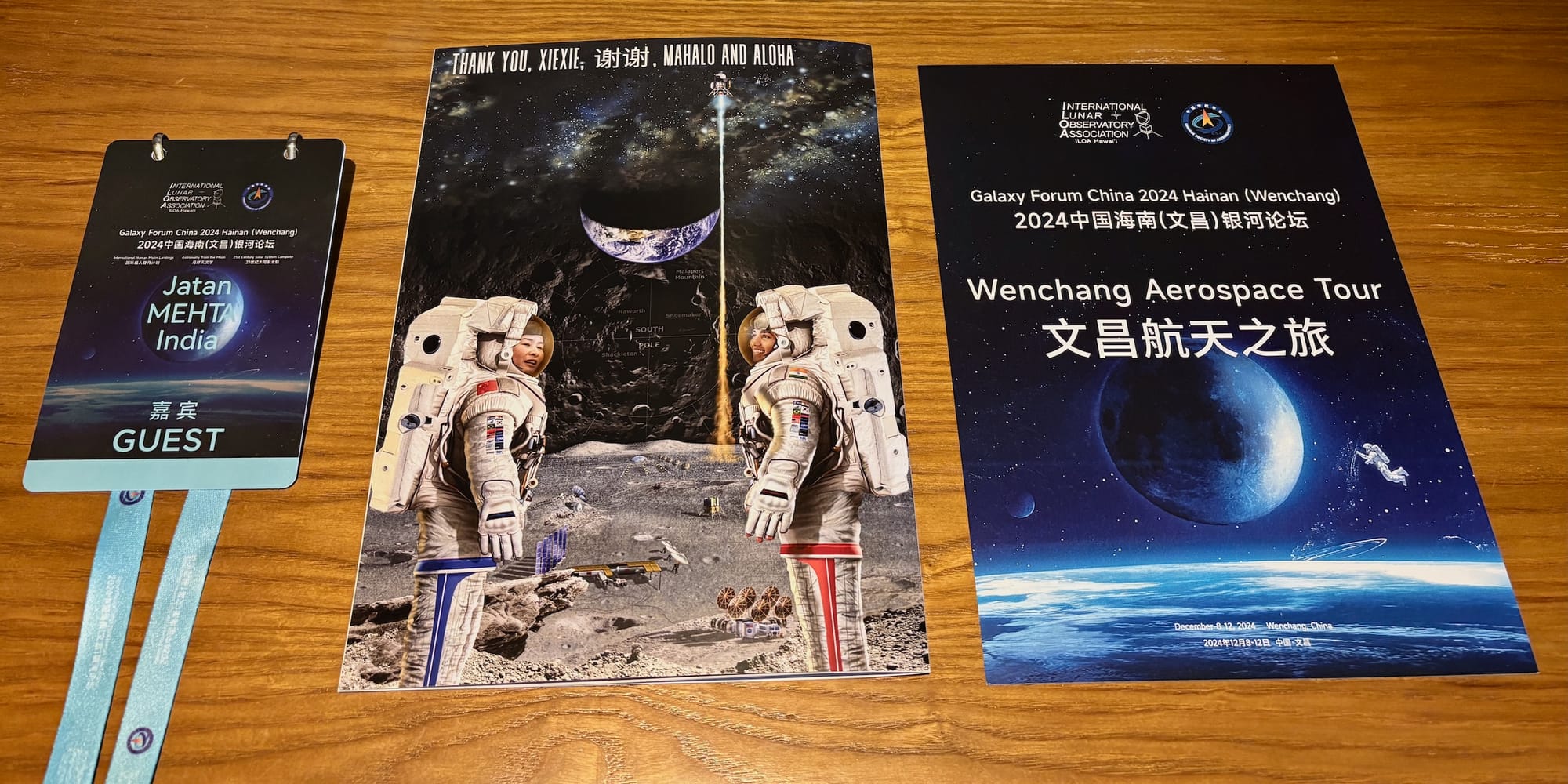
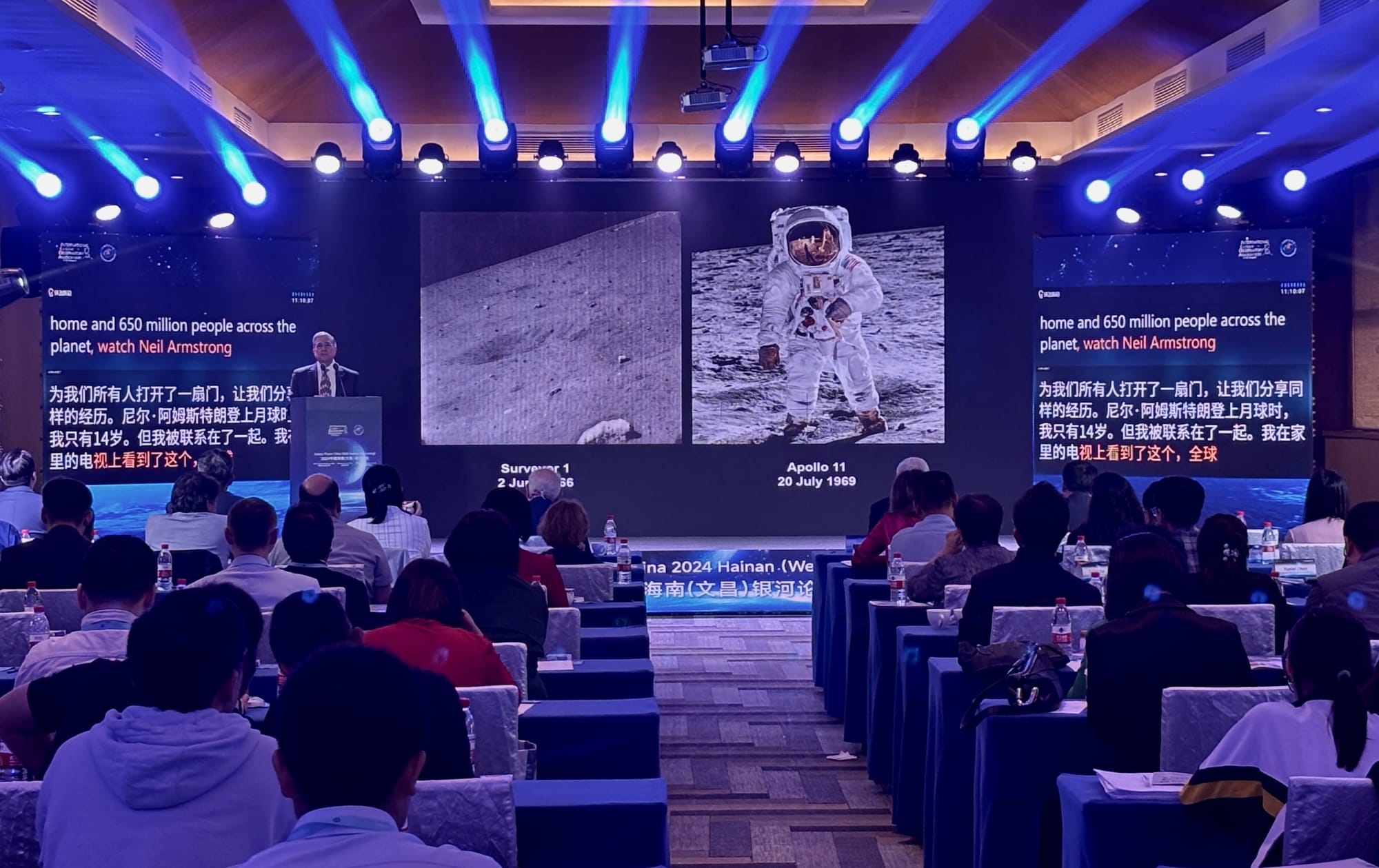
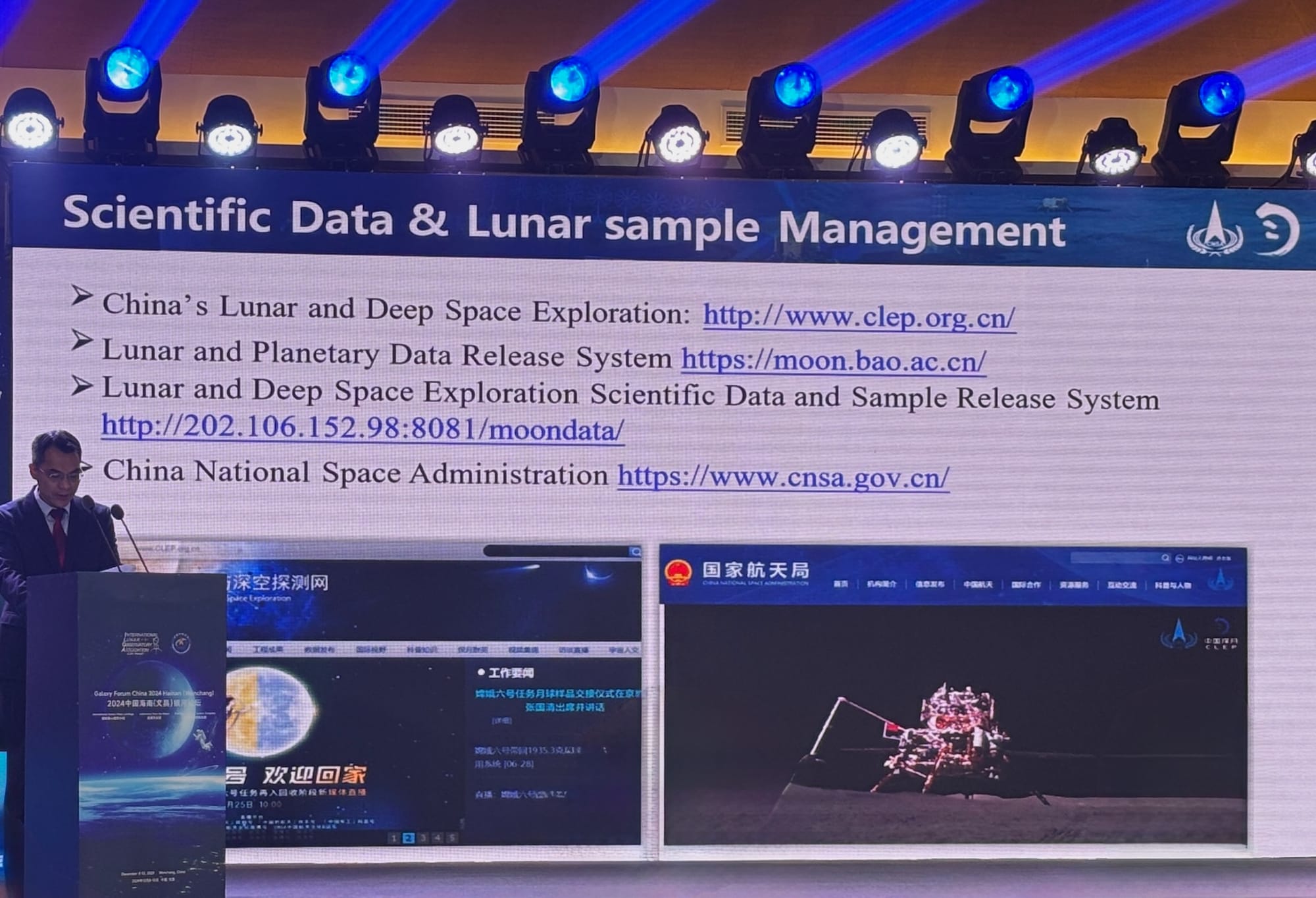
Wang Wei, Director of International Cooperation in lunar exploration at CNSA specified at the Galaxy Forum today, December 9, that as China builds up to a long-term, crew-robotic, orbital-surface Moonbase named the International Lunar Research Station (ILRS) next decade, the agency is looking for varying levels of international cooperation, exchanges, and collaborations in the following specific technological and scientific areas:
- Future mission concept studies
- Research and development of spacecraft systems and subsystems
- Ground communications networks
- Scientific data sharing of orbital and surface missions
- Coordination of Mooncraft, including for scientific observations from orbit
- Research on lunar samples, including but not limited to those brought by Chang’e 5 and 6 missions
- Lunar science education and outreach for the public
ILRS plans to host large-scale science and technology experiments continually via remotely operated robots and, when available, via humans. Wang Wei noted that international partnerships are desirable to achieve the science goals of ILRS, which are as follows:
- Learn about our Moon’s evolution & structure
- Conduct lunar-based astronomy for doing cosmology and studying habitable exoplanets
- Observe the Sun and Earth from the scientifically unique vantage point of our Moon
- Conduct lunar-based experiments like studying plant growth
To target meeting these scientific objectives, the ILRS project will formulate an “International Lunar Science Alliance” and “Scientific Joint Research Center”. Likewise on the technology front in the areas outlined above, there will be an “ILRS Inter-government Cooperation Committee” and an “International Lunar Technology & Innovation Alliance.”
More adjacent science updates have also come out of the Galaxy Forum. Xuelei Chen of the National Astronomical Observatories, Chinese Academy of Sciences (NAOC/CAS) said that the target launch year for the proposed lunar orbital satellite constellation called Discovering Sky at Longest wavelength (DSL) is 2027. DSL will make cosmological measurements from the Moon’s farside with one mother satellite and eight trailing daughter satellites.
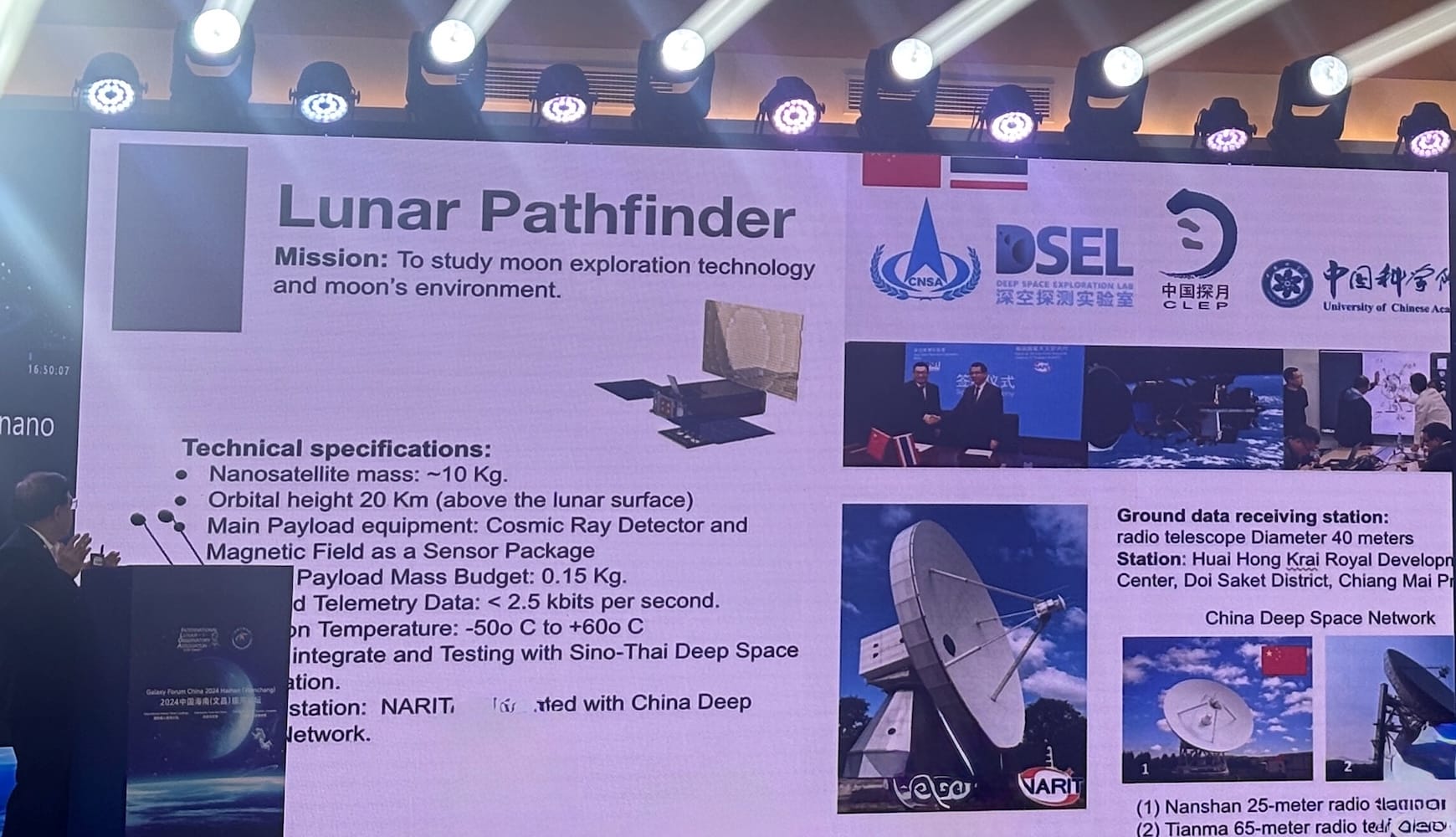
Thailand and China
Boonrucksar Soonthornthum of the National Astronomical Research Institute of Thailand (NARIT) presented that the country is planning its first Moon mission called “Lunar Pathfinder” through a Thai space consortium. It will be a small satellite, which will measure cosmic rays and magnetic fields from low lunar orbit. Lunar Pathfinder might launch onboard China’s Chang’e 8 spacecraft in 2028. Between this development and Thailand considering launching national Moon missions through collaboration with ispace Japan, it represents the country’s growing interest in exploring our Moon through strategic partnerships.
Previously in April, Thailand joined the China-led ILRS Moonbase project, a move that followed NARIT as Thailand’s largest space research organization joining ILRS in September 2023. As Ling Xin has reported, NARIT will fly a three-kilogram instrument duo on China’s upcoming Chang’e 7 orbiter to study solar storms and cosmic rays respectively. China aims to launch the Chang’e 7 lander and orbiter in 2026. The NARIT instruments will mark Thailand’s first study of Luna. NARIT operates the large 40-meter Thai National Radio Telescope, which China intends to use to monitor spacecraft trajectories of future ILRS missions.
More Artemis delays
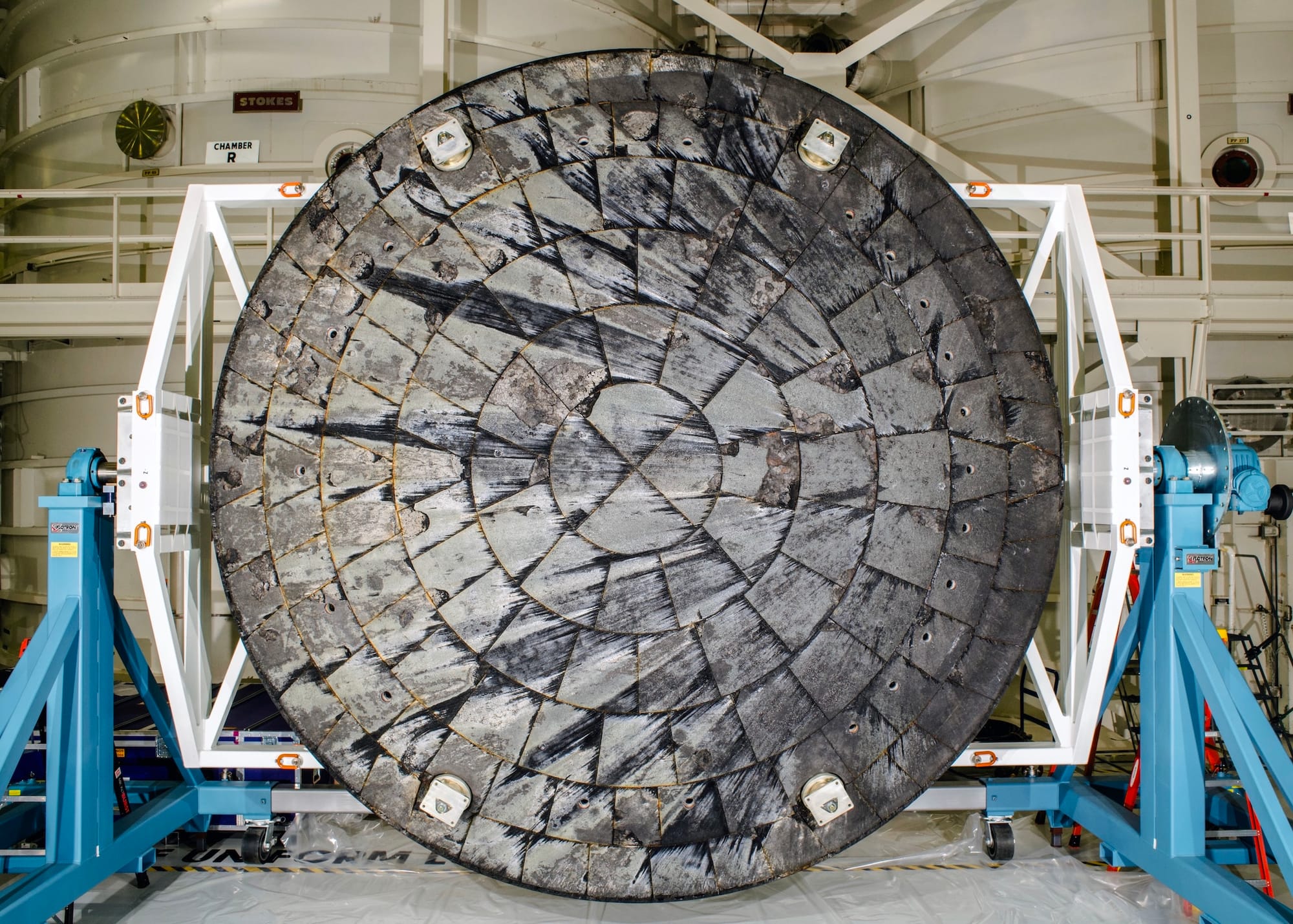
- After comprehensive analyses, dozens of tests, and independent reviews of the heat shield degradation issues on the Artemis I Orion spacecraft, NASA has concluded that the heat shield’s ablative material was not porous enough to vent and dissipate hot gas buildup during its bounced atmospheric reentry which led to cracks and even entire chunks of shield loss.
- A public report released in May 2024 by NASA’s Office of Inspector General (OIG) revealed to the US taxpayers that the heat shield had taken a deeper beating than the agency initially let on, who then presented it as a non-blocker for the crew-carrying Artemis II flight around the Moon and back. NASA has been criticized for withholding from public knowledge independent review reports about the nature of the heat shield issue. The launch of Artemis II is now postponed from September 2025 to no earlier than April 2026. With the Artemis II Orion spacecraft’s heat shield already attached to it, NASA cannot make hardware changes without disassembling it. The agency has opted to tweak the reentry profile instead to avoid severe material loss. The Artemis III Orion’s shield will see some design enhancements though. The details of this whole situation are best laid out and contextualized by Stephen Clark.
- The Artemis III crewed Moon landing mission is also officially delayed to mid-2027. This was expected by keen US space industry observers. For example, Jeff Foust reported back in July that an internal confirmation review conducted by NASA on the readiness of SpaceX’s Lunar Starship gave Artemis III a 70% chance of launch by February 2028, nearly a year and a half later than the then public date of September 2026.
Many thanks to Open Lunar Foundation and Louis-Jérôme Burtz for sponsoring this week’s Moon Monday! If you too appreciate my efforts to publish this curated community resource for free, support my independent writing. 🌙
More Moon
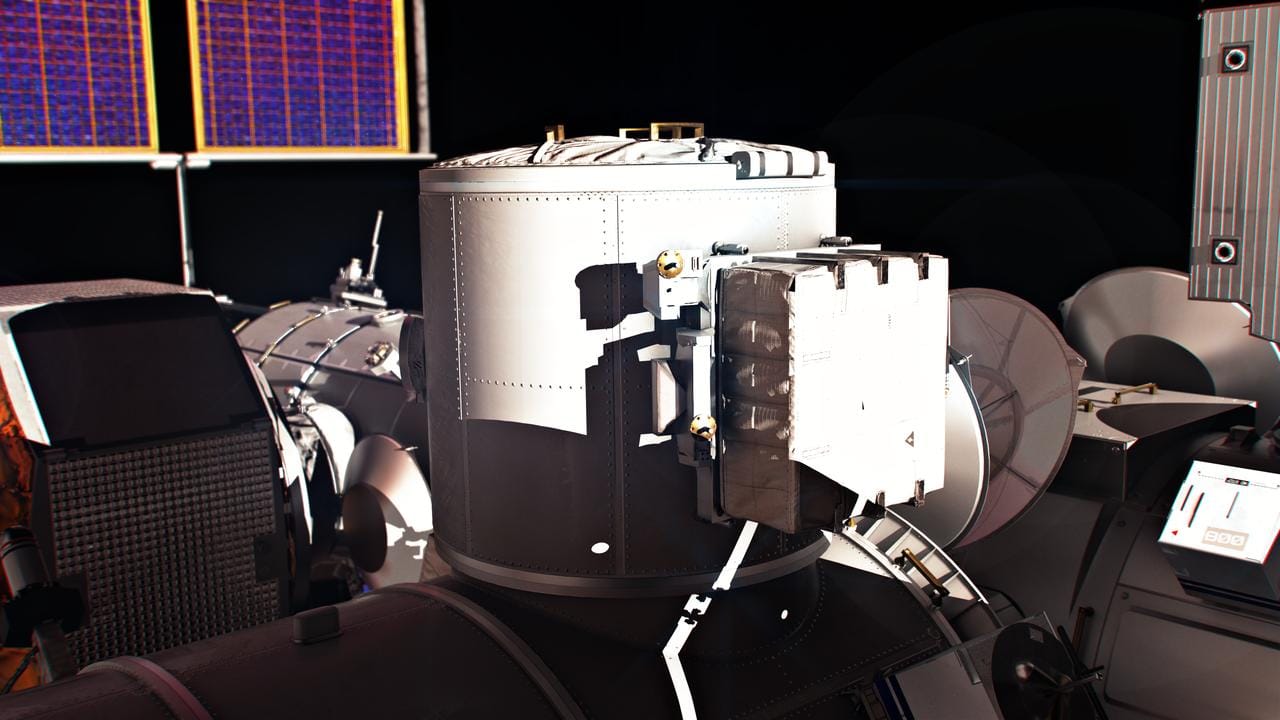
- Also at the 2024 Galaxy Forum, former NASA astronaut Don Thomas said in his presentation that it’s the Artemis VI mission that’s scheduled to carry an airlock for crew and science to the NASA-led international Gateway lunar orbital habitat. This would mean the airlock will be operational post 2030. In January 2024, NASA and the Mohammed bin Rashid Space Centre (MBRSC) announced that the UAE will provide the Gateway’s airlock. Russia was originally supposed to do that but the country later pulled out. An airlock would allow future Artemis astronauts on Gateway to do spacewalks—while around the Moon! In return for this contribution, the UAE will get to send an astronaut to the Gateway aboard an Artemis flight. Per an earlier report by Sarwat Nasir, it’s possible that Boeing builds this airlock for UAE.
- ESA’s Space Resources Accelerator program has started off by providing a total of €1 million across six European and Canadian companies to mature their proposed technological solutions related to prospecting, extracting, and utilizing lunar resources. ESA is providing these funds on a matching contribution basis to the company’s own investment. The agency launched the accelerator program earlier this year through the Luxembourg-based European Space Resources Innovation Center (ESRIC) and ESA’s Business in Space Growth Network.
- Continuing the theme of India leveraging the vantage point of the Moon, over 60 scientists from across India gathered at the Raman Research Institute to propose and discuss a gamut of astronomical observations that could be conducted from the Moon’s surface or orbit over the next decade or two with varying readiness levels to uniquely advance respective subfields.
